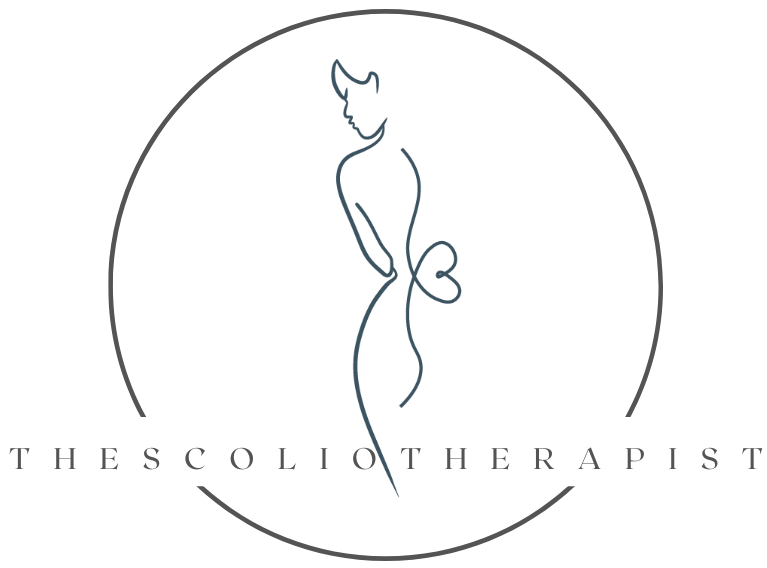Tongue Ties and Scoliosis
Have you heard about the connection between tongue ties and scoliosis? Maybe you’re not sure what tongue ties are, but want to learn more? Tongue ties and scoliosis are connected and in this post, we will chat all about that connection and more.
One of my recent goals has been to expand my knowledge of scoliosis, specifically in terms of how it impacts (and is impacted by) other parts of the body. I’ve talked before about the interactions between the spinal curve and the lymphatic system, internal organs, and even your nutrition.
Part of this journey for me has involved seeking out other experts in these various niches, one of whom is Dr. Laura Glazebrook. I’ve talked with Dr. Laura before about how scoliosis can affect pregnancy and pelvic health, and in that conversation, we briefly touched on tongue ties. (You can hear our first conversation in Episode 56 of Ahead of the Curve.)
I recently reached out to Dr. Laura again to talk specifically about tongue ties and scoliosis and how tongue ties can impact scoliosis. We discussed our experiences with tongue tie diagnosis and side effects and shared our stories about getting our tongue ties released. (If you want to hear my entire follow-up conversation with Dr. Laura, you can access it here.)
Connection Between the Tongue and Spine
The more I research, work with scoliosis patients, and live my own life with scoliosis, the more I realize how interconnected every part of the body is. Yes, it might seem far-fetched to think that the tongue can affect your spinal curve. But once you consider how the spine is connected to the muscles in the neck, which help control all the movements of your face, it’s easier to see those potential connections.
Not every person with scoliosis has a tongue tie. And not everyone with a tongue tie has scoliosis. But there are people who have both who have experienced positive results in one area from treating the other, which shows that we need to continue learning and assessing for tongue ties and scoliosis.
Self-Screening Assessment for Tongue Tie
If you think you might have a tongue tie (or it’s something you’ve never considered before), there are some steps you can take to assess yourself and see if it might be a possibility.
Here are the self-assessment questions:
Can you breathe through your nose for 3 minutes straight?
Do you have to actively use your facial muscles to close your lips?
Do you have large tonsils?
Is the motion of your tongue restricted?
Is there evidence of “dental wear” (e.g., teeth grinding)?
Do you have a narrow palate?
If you have difficulty keeping your lips closed and/or breathing through your nose, there’s a chance you have a tongue tie. A self-assessment might not be conclusive, so you may want to follow up with a dentist, oral surgeon, or airway specialist.
Benefits of Tongue Tie Release
Of course, every case is different, but a tongue tie release can offer several potential advantages:
Better sleep
Less jaw pain
Reduced chance of teeth grinding
Less dry mouth and snoring
Fewer headaches
Reduced anxiety
The procedure itself can be painful, but there are some exercises and stretches that you can do ahead of time to support a quick recovery. If you think you might have a tongue tie or want to pursue a release, start by talking with your dentist or healthcare provider.
Can Tongue Tie Release Treat Scoliosis?
It’s important to remember that every case is different, and a treatment approach that works for someone else may not work for you. However, as I started to research the connection between tongue ties and scoliosis, I found several cases that showed a positive correlation between tongue tie release and scoliosis curvature reduction.
Many of these cases involved children who had tongue ties and scoliosis — and who saw their curves resolve following a tongue tie release. There were other factors in many of these cases, including scoliosis-specific exercise, but it seems like the release procedure did have a positive effect on the spinal curve.
And my own experience has shown a positive correlation as well. I’ve certainly noticed an improvement in my curve after having my tongue tie released, as has Dr. Laura.
Finding New Ways to Treat Scoliosis
Every person’s experience with scoliosis is different. That’s why it’s so important to learn as much as you can about your own body and your curve. Understanding your body better gives you more opportunities to find treatment and self-care protocols that reduce your pain, improve your posture, and limit curve progression.
If you’d like personal support to find those exercises and treatment options that work for you, consider scoliosis coaching. I offer both 1:1 and small-group programs designed to help you understand and treat your curve through sustainable habits like exercise and posture correction.
Right now, I’m offering discounts on both virtual 1:1 coaching and membership in the Self-Paced Collective during Open Enrollment. Get all the details about the discounts! If you have any questions about these programs or about Open Enrollment discounts, feel free to contact me.
Remember, if you want more information like this on key scoliosis topics, listen to my podcast, Ahead of the Curve. Subscribe to get every episode when it airs!
Resources Mentioned
Ahead of the Curve, Episode 56: Pelvic Floor Health and Scoliosis With Dr. Laura Glazebrook
Virtual 1:1 Scoliosis Coaching
